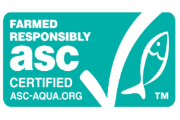Information for kidney patients
This leaflet will tell you how to eat enough protein to keep you well or to help you recover from illness. You may need extra protein now because:
- Your body is losing protein through dialysis.
- Your body is losing more protein than usual. This happens during infections, especially peritonitis.
- Your appetite is small, and you are not eating enough protein.
Why are protein foods important?
We need protein in every part of our body. It is essential:
- For strong muscles.
- To fight off infections and help recovery.
- For healthy skin and blood.
What if I usually limit phosphate, potassium, and salt?
You may not need to limit foods that are high in phosphate, potassium, or salt now. Your dietitian will give you more guidance. If you take phosphate binder tablets you should continue to take these as usual.
Which foods are high in protein?
Meat, chicken, and fish:
- Fresh, unprocessed meat, chicken, and fish are lowest in salt and phosphate.
Dairy:
- Milk.
- Yoghurt – look for higher protein options with more than 7g of protein per 100g such as Skyr or Liberté.
- Cheese.
- Milk puddings such as rice, semolina and tapioca puddings, and custard.
Vegetarian options:
- Eggs.
- Beans, lentils (including dahl) and chickpeas (including hummus).
- Soya milk.
- Tofu and tempeh.
- Quorn.
- Nuts.
- Seitan.
How can I eat enough protein?
Protein cannot be stored by the body, so you need high protein foods 2-3 times a day. As a guide aim for the following portions and serving sizes:
- Cooked meat or chicken about the size of half of your hand (90g).
- Cooked fish about the size of your hand (140g).
- 2-3 eggs (120g-180g).
- Cheese about the size of your index and middle fingers (50g).
- About 4 tablespoons of beans or lentils (100-140g).
- About 3 tablespoons of nuts (50g).
If you have peritonitis, you will need to eat more protein than usual. Try to have 2-3 high protein snacks in addition to high protein meals. High protein snacks can also be helpful if you have a poor appetite and are eating smaller meals than usual. There are some ideas for meals on pages 6, 7, and 8.
Fatty and sugary foods
You should also try to eat more high fat and high sugar foods. This will help your body use the protein you eat.
Swap low or reduced fat and sugar foods for full fat and full sugar options. For example, swapping semi-skimmed milk for full fat milk.
If you have diabetes you may need to check your blood glucose levels more often at this time. You may also ask your diabetes team for advice. When you have recovered you should return to your usual healthy way of eating.
What meals, snacks, and drinks are high in protein?
Here are some ideas for high protein meals, snacks, and drinks:
High protein meals
Breakfast or light meals:
- 1 scrambled egg and slices of bacon.
- Cereal and milk.
- Porridge made with milk (instead of water).
- Peanut butter on toast.
Light meal or lunch:
- Ham and/or cheese omelette.
- Tuna mayonnaise sandwich.
- Cheese ploughman's.
- Hummus and carrot.
- Bean soup and grated cheese.
- Baked beans on toast topped with cheese.
- Prawn cocktail.
- Chicken sandwich.
- Lentil/bean and nut salad.
Main meals:
- Meat or chicken stew/casserole.
- Sausage and mash.
- Salmon filled.
- Fish and chips.
- Dahl.
- Tofu stir-fry and noodles.
- Cheese and tomato pizza topped with extra chees.
- Spaghetti bolognaise and grated cheese.
- Chicken breast.
- Tuna pasta bake.
- Macaroni cheese.
- Vegetarian lasagna.
- Bean chilli.
High protein snacks
Savoury options:
- Sandwich with meat, cheese, or hummus.
- Sausage roll or mini pork pie.
- Slice of pizza or quiche.
- Cocktail sausages.
- Seafood sticks.
- Scotch egg.
- Boiled egg.
- Eggy bread.
- Individual cheese portion.
- Cheese and biscuits.
- Tofu bites.
- Cheese and onion pastry slice.
- Chicken drumstick or chicken bites.
- Falafel and hummus.
- Nut butter and crackers.
- Bombay mix.
- Small handful of nuts.
- Quorn ready roasted fillets.
- Meat free sausages.
- Meat free picnic eggs.
- Vegan pasty.
Sweet options:
- Egg custard tarts,
- Custard.
- Mousses/fruit fools.
- Rice, semolina, or tapioca puddings.
- Soya desserts.
- Yoghurt.
- Halwa.
High protein drinks
- Milk.
- Hot chocolate.
- Milkshake.
- Supermarket milk drinks.
- Soya drinks.
- Yoghurt drinks, kefir, and lassi.
- Soya drinks.
- Ovaltine.
- Cappucino.
- Peanut punch.
- Latte.
Food labels
If you are buying a convenience meal, sandwich, or snack, it can be helpful to look at food labels to see how much protein is has. A main meal should have at least 20g protein, ideally more.
Here is an example of a food label showing protein content:

How can I eat enough protein if I have a small appetite?
Try to eat small portions, but more often. Have 2-3 high protein snacks or high protein drinks in between your meals every day.
For more information ask for a copy of our leaflet ‘Diet for a poor appetite.’
Try protein boosters to fortify your meals. The quantities of protein boosters given below are for 1 portion. You may be able to add more than 1 booster per portion.
Protein booster portions
| Food/Drink | Protein boosters. |
| 1 pint full fat milk. | Add 4 heaped tablespoons dried milk powder to make fortified milk. |
| Breakfast cereal, porridge, custard, rice pudding. | Add 1 tablespoon dried milk powder, evaporated milk, ground almonds, chopped nuts. |
| Soups. | Add 1 tablespoon dried milk powder and/or ground almonds. Add 2 tablespoons coconut milk. Add cooked meat, chicken, lentils, or beans. Sprinkle with 1 tablespoon grated cheese. |
| Mashed potato. | Add 1 tablespoon dried milk powder and/or grated cheese. |
| White sauces. | Add 1 tablespoon dried milk powder. Blend in 1 tablespoon soaked cashew nuts or silken tofu. |
| Pasta dishes. | Sprinkle with 1 tablespoon grated cheese. |
| Curries and stir-fries. | Add 1 tablespoon ground almonds or peanut butter. Add 2 tablespoon coconut cream. Add 1 tablespoon natural yoghurt after cooking. |
| Vegetable or bean dishes. | Add 1 tablespoon ground almonds, chopped nuts or peanut butter. Add 2 tablespoons coconut cream. Add or sprinkle with 1 tablespoon grated cheese. Add 1 tablespoon natural yoghurt after cooking. |
Tips
- Aim to have high protein foods such as meat, chicken, fish, eggs, beans, lentils, nuts, or tofu at every meal.
- Eat the high protein part of your meal first.
- Have a generous portion of starchy food such as pasta, egg noodles, or quinoa to add more protein to your meal.
- Try to have milky desserts such as yoghurt, rice pudding, or soya dessert after or between your meals.
- Have high protein snacks between meals such as cheese and biscuits or falafel and hummus.
- If you are buying ready meals check the label and aim for at least 20g of protein for a meal.
- Have milk or soya drinks such as milkshakes or hot chocolate instead of tea, water, and squash.
- Keep drinks separate from meals.
Do I need supplement drinks prescribed?
- If you are unable to eat enough protein, your dietitian may recommend nutritional supplements. These are available as milkshake style drinks, fruit juice style drinks, small ‘shot’ style drinks, desserts, or powders. Samples can be provided by your dietitian or they can be prescribed short-term by your GP.
- For more information ask of our leaflet/page with tips for taking nutritional supplements.
How much protein do I need?
Different people need different amounts of protein.
These foods all supply 1 protein portion. Most people having dialysis treatment need 6-8 protein portions per day. Some people find it helpful to plan their protein portions across the day. Your dietitian can tell you how many protein portions you need to eat each day, and can help you plan meals:
- 25g (1oz) cooked red meat, chicken or turkey.
- 40g (1½oz) cooked or tinned fish.
- 25g (1oz) cheese.
- 200ml (⅓ pint) milk.
- 125g / 1 small pot yoghurt or small portion custard or rice pudding.
- 1 egg.
- 100g (4oz) hummus.
- 50g (2oz) Quorn.
- 40g (1½oz) cooked tofu.
- 110g (4oz) cooked pulses such as lentils, dahl or baked beans.
How can I eat more sustainably?
Many people want to eat food that is more environmentally friendly. Below are some ideas you could consider.
- Try buying plant food sources such as beans, lentils, soya mince, Quorn, tofu, or nuts.
- When buying fish look for the Marine Stewardship Council or Aquaculture Stewardship Council symbols:


- Try calcium fortified plant milk such as soya or oat instead of cow’s milk.
- Opt for wholemeal breads and wholegrain versions of pasta and cereals.
- Choose local and seasonal produce.
- Try to limit fruit and veg that have been flown from abroad.
- Avoid chopped, ready prepared and packaged fresh fruit, veg and salads if you can.
- Reduce food waste, especially of fresh fruit and veg, by choosing tinned and frozen alongside seasonal fresh produce.
Useful webpages for further information
Information on kidney disease and food written by the kidney dietitians at North Bristol NHS Trust:
Nutrition and Dietetics Patient Information | North Bristol NHS Trust (nbt.nhs.uk)
Diet and lifestyle information including recipe books to download:
Living with kidney disease | Kidney Care UK
Webinar in importance of protein for people on haemodialysis:
Webinars on Kidney Health - patientwebinars.co.uk
Practical advice to help you reduce your weekly food shopping bill while keeping a nutritious and kidney friendly diet:
Shop for a kidney friendly diet on a budget | Kidney Care UK
Contact your dietitian if you need further help.
© North Bristol NHS Trust. This edition published May 2024. Review due May 2027. NBT003617.
Support your local hospital charity

See the impact we make across our hospitals and how you can be a part of it.

